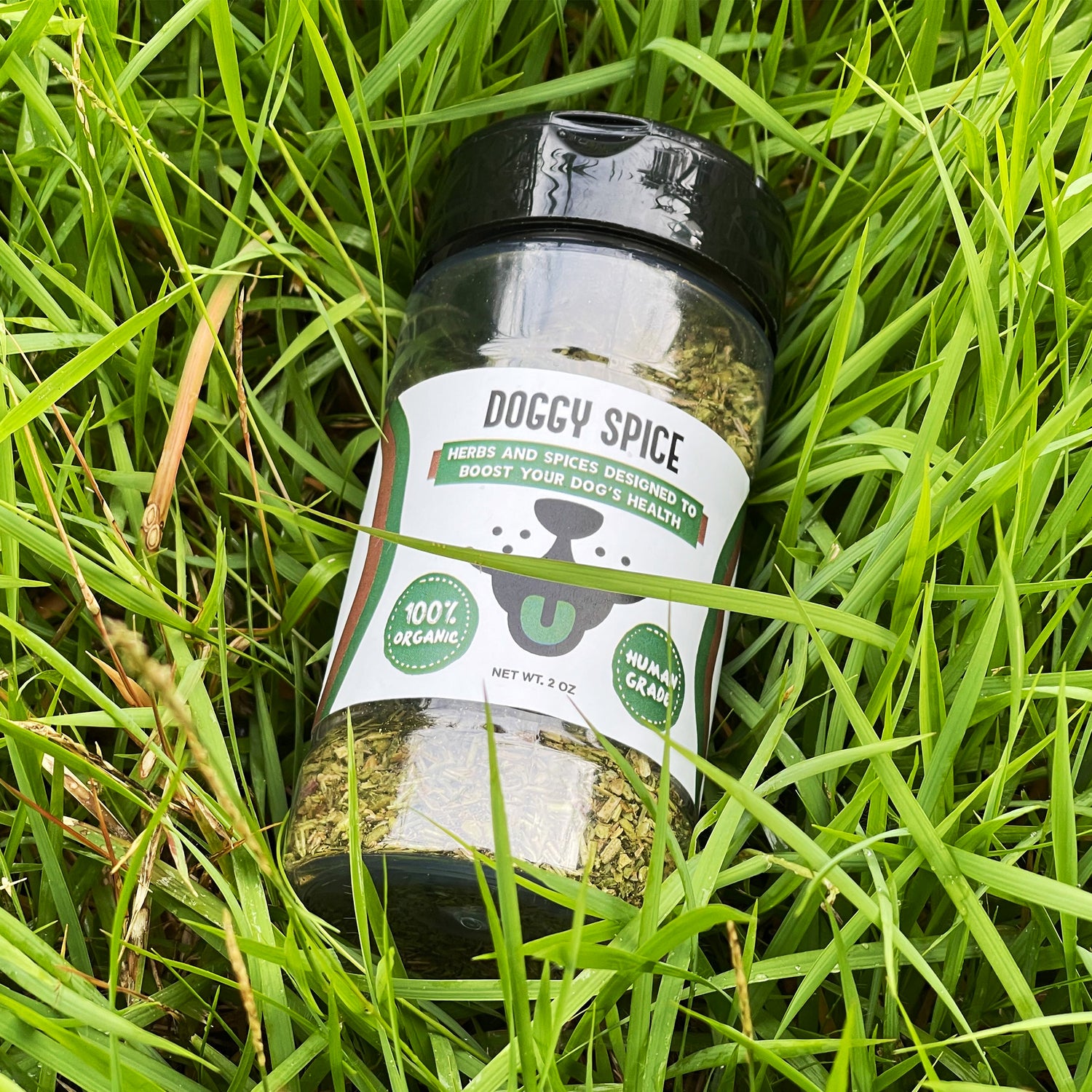
Winter Safety Tips for Dogs: Protecting Their Paws and Skin
Share
Introduction
Winter can be a challenging season for your furry friend. Harsh weather, freezing temperatures, and icy sidewalks can affect your dog’s comfort and health. In this guide, we’ll explore how to protect your dog’s paws and skin during the cold months, ensuring they stay happy and healthy all season long.
The Impact of Winter Weather on Dogs 🌨️🐕
Winter brings unique challenges that can affect your dog’s well-being, including:
- Dry Skin: Cold, dry air can strip moisture from your dog’s skin, leading to itchiness and irritation. Learn how to recognize dry skin on your dog.
- Paw Injuries: Ice, salt, and freezing temperatures can cause cracked paw pads and discomfort.
- Hypothermia Risks: Smaller or short-haired breeds are especially vulnerable to the cold. Here are some signs your dog is cold or has frostbite.
Being proactive about their care is key to keeping them comfortable and safe.
Protecting Your Dog’s Paws During Winter 🐾❄️
Here are some essential tips to protect your dog’s paws in freezing weather:
- Use Dog Booties:
- Invest in durable, waterproof booties to shield paws from ice and salt.
- Look for pairs with adjustable straps for a snug fit.
- Apply Paw Balm:
- Use a pet-safe balm or wax before walks to create a barrier against ice and chemicals.
- Reapply as needed, especially after long outings.
- Avoid Rock Salt:
- Choose pet-friendly ice melts for your property.
- Rinse your dog’s paws after walks to remove harmful chemicals.
- Trim Paw Fur:
- Keep fur between paw pads trimmed to prevent ice buildup.
- Inspect Paws Regularly:
- Check for signs of cracking, redness, or lodged debris after every walk.
Skin Care Tips for Dogs in Winter 🛁🐶
Cold weather can take a toll on your dog’s skin. Follow these tips to keep it healthy:
-
Hydrate Their Skin:
Add omega-3 fatty acids to your dog’s diet to improve skin moisture. Consult your vet for proper dosages. -
Avoid Overbathing:
Bathing too often in winter can strip natural oils from their skin. Use gentle, moisturizing shampoos when necessary. -
Humidify Your Home:
Place a humidifier in your home to combat dry indoor air. -
Brush Regularly:
Brushing helps distribute natural oils and prevents dry, flaky skin. -
Dress for the Weather:
Use dog sweaters or coats to protect breeds with short fur or sensitive skin. Check out the best winter coats for dogs.
“Dogs are prone to dry skin and paw injuries during winter due to the combination of cold outdoor air and dry indoor heating. Proper skin and paw care are essential to maintaining their overall health.”
— American Veterinary Medical Association (AVMA)
Winter First Aid Tips for Dog Owners ❄️🐾
Cold weather can lead to unexpected situations where quick action is necessary to protect your dog’s health. Here are essential first-aid tips for common winter-related issues:
Frostbite 🧊
Frostbite occurs when your dog’s skin and tissues freeze due to prolonged exposure to cold temperatures. Here’s what to do:
- Identify symptoms: Pale, hard, or cold skin on extremities (paws, ears, or tail).
- Act quickly: Gently warm the affected area with a warm (not hot) towel. Avoid direct heat sources like heating pads.
- Avoid rubbing: This can cause further damage to delicate tissues.
- Seek veterinary care: Frostbite can lead to tissue damage and infection, so immediate professional care is essential.
Read more on how to recognize frostbite in dogs.
Hypothermia 🐕⚕️
Dogs exposed to extreme cold for too long may develop hypothermia. Watch for:
- Shivering
- Lethargy
- Weak pulse
- Difficulty breathing
Steps to take:
- Warm your dog gradually: Wrap them in blankets or place them in a warm (not hot) environment.
- Offer warm fluids: If your dog is alert, provide lukewarm water to drink.
- Avoid sudden heat changes: Don’t use hot water or heating pads, as they can shock the system.
- Consult your vet: Severe hypothermia requires immediate veterinary attention.
Ice and Salt Injuries 🧼🐾
De-icing salts and icy surfaces can cause burns or cuts on your dog’s paws. Here’s how to handle it:
- Rinse paws immediately after walks in salted areas.
- Apply paw balms to soothe irritated skin.
- Inspect for injuries: Check for cuts or cracks and clean wounds with pet-safe antiseptic.
Preventative Measures:
- Keep a winter pet first aid kit stocked with essentials like paw balm, bandages, a thermal blanket, and a pet-safe antiseptic.
- Take a pet first-aid class to feel confident in handling emergencies.
By preparing for winter hazards, you can ensure your dog stays safe and healthy during the colder months! 🌟
Top Herbs and Spices to Keep Your Dog Healthy All Year 🌿
- Cleavers (Galium Aparine) - Supports lymphatic health
- Rosemary- Antioxidant-rich
- Dandelion Greens - Provides vitamins A, C, and K
- Basil - Calming properties
- Peppermint - Aids digestion
- Celery Seeds - Anti-inflammatory benefits
- Dill - Rich in antioxidants
- Oregano - Immune-supporting
- Parsley - Supports fresh breath
- Thyme - Immune booster
- Ginger - Soothes stomachs
- Tumeric - Anti-inflammatory properties
These herbs and spices can easily be incorporated into your dog’s meals with Doggy Spice to promote overall well-being. 🌱
Protecting Dogs in Winter Frequently Asked Questions (FAQ) 🧐
How do I know if my dog’s paws are too cold?
If your dog is limping, licking their paws excessively, or holding up a paw, they may be too cold. Inspect their paws for signs of injury or frostbite.
Can dogs get frostbite on their paws?
Yes, frostbite can occur if their paws are exposed to freezing temperatures for too long. Use protective booties and limit exposure during extreme cold.
Is it safe to use human moisturizers on my dog’s skin?
No, human moisturizers can contain ingredients harmful to dogs. Always use pet-safe products recommended by your vet.
What should I do if my dog ingests de-icing salt?
Contact your vet immediately. De-icing salts can be toxic if ingested, so always rinse your dog’s paws after walks.
How often should I apply paw balm in winter?
Apply paw balm before and after walks to protect and moisturize their paw pads.
Winter Diet Tips for Healthy Skin and Paws 🥗❄️
A nutritious diet can support your dog’s skin and paw health during winter. Consider these dietary tips:
- Hydration: Ensure fresh water is always available, as dehydration can worsen dry skin.
- Supplements: Add fish oil or flaxseed oil to promote skin and coat health.
- Winter Treats: Use dog-friendly recipes that include pumpkin or sweet potato for added nutrients.
Conclusion
Winter poses unique challenges for dogs, from dry skin to icy paw injuries. By following these tips and incorporating protective measures like booties, moisturizers, and a balanced diet, you can ensure your furry friend stays safe and comfortable all season long.
References 📚
- American Veterinary Medical Association (AVMA). (n.d.). Winter Pet Safety Tips. Retrieved from https://www.avma.org
- PetMD. (n.d.). Winter Care Tips for Dogs. Retrieved from https://www.petmd.com
- ASPCA. (n.d.). Protecting Your Pet’s Paws in Winter. Retrieved from https://www.aspca.org
- Veterinary Health Center. (n.d.). Importance of Skin and Coat Health. Retrieved from https://www.vethealth.org

